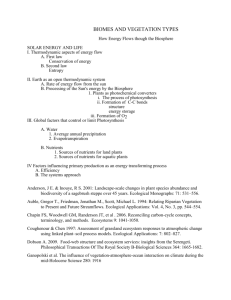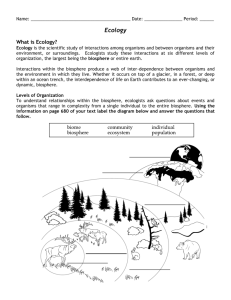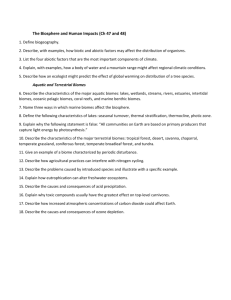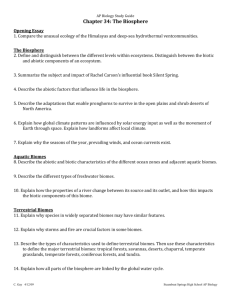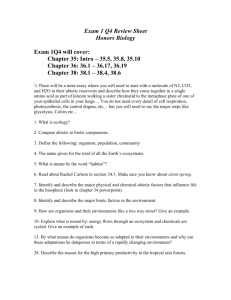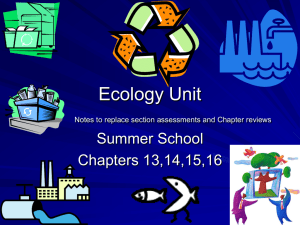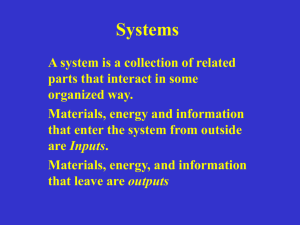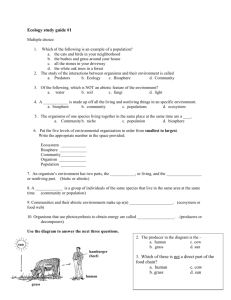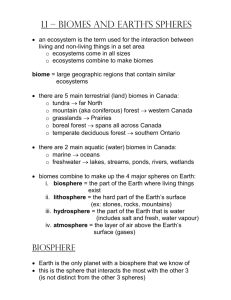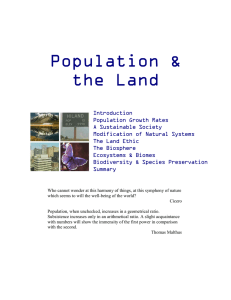The Biosphere: An Introduction to Earth's Diverse Environments
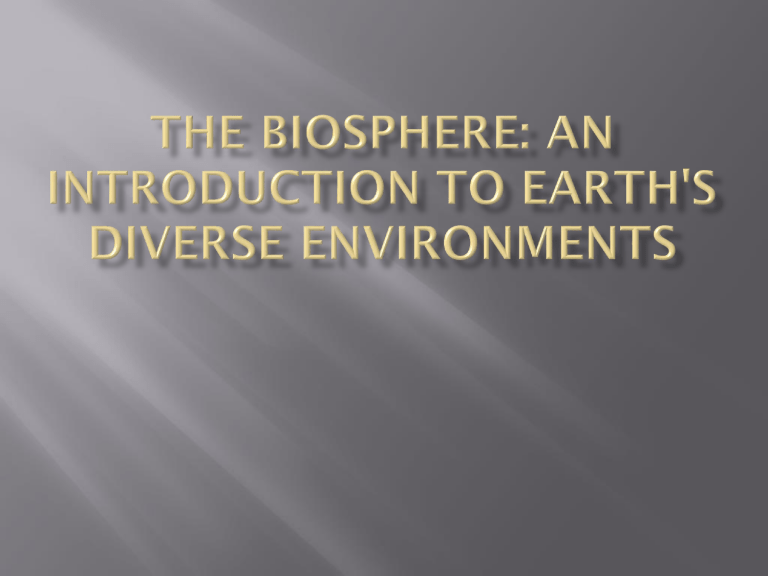
1. Organism
Individual organisms interacting with the environment
2. Population
Group of individuals of the same species living in a particular geographic area
3. Community
All the populations of different species that inhabit a particular area
4. Ecosystem
All the biotic and abiotic components in a certain area
Landscapes - array of ecosystems
The biosphere is the global ecosystem.
It extends from
an altitude of several kilometers
to 3,000 m beneath Earth's surface to a depth of several kilometers in the oceans
The biosphere is self-contained and characterized by patchiness.
Major abiotic factors determine the biosphere's structure and dynamics
The Earth’s tilt causes the seasons
– The seasons of the year result from the permanent tilt of the plant on its axis as it orbits the sun
https://www.youtub
e.com/watch?v=O9ha wBb3wbk
Disturbances such as fire, hurricanes
Temperature and Wind
Because of its curvature, Earth receives an uneven distribution of solar energy
The tilt of the Earth's axis causes the seasons of the year
Globe's position relative to the sun changes through the year
The tropics experience the least seasonal variation in solar radiation
Uneven heating causes rain and winds
The direct intense solar radiation near the equator has an impact on the global patterns of rainfall and winds
The tropics experience the greatest annual input and least seasonal variation in solar radiation
https://www.youtube.com/watch?v=i2m ec3vgeaI https://www.youtube.com/watch?v=Ye4
5DGkqUkE
Generally modify climate of nearby land
Landforms can also affect local climate
Variations in climate determine the character of the world's biomes http://gpb.pbslearningme
dia.org/resource/ttv10.sci.
ess.watcyc.currents/therole-of-ocean-currents-inclimate/ http://earth.nullschool.net/#curre nt/wind/surface/level/orthograp hic=-75.00,0.00,247
Species exist in a given place because they evolve there or disperse there.
Unique adaptations that fit a particular environment allow organisms to survive there.
Organisms vary greatly in their ability to tolerate fluctuations and long-term changes in their environment.
Human activities affect all parts of the biosphere
– Cities, farms, and highways change the landscape
– The widespread use of chemicals such as fertilizers and pesticides poses problems to people and other organisms.
Abiotic factors influencing the distribution of aquatic biomes
Light
Distance from shore
Availability of nutrients
Estuaries are productive areas where rivers meet the ocean
–
–
–
–
The saltiness of estuaries ranges from less than 1% to
3%
They provide nursery areas for oysters, crabs, and many fishes
They are often bordered by extensive coastal wetlands
Among the most productive biomes
Tropical forests cluster near the equator
Savannas are grasslands with scattered trees
Deserts are the driest terrestrial biomes
The chaparral is a region of dense, spiny shrubs with tough, evergreen leaves
Temperate grasslands include the North
American prairie
Broadleaf trees dominate temperate forests
Coniferous forests are often dominated by a few species of trees
Arctic tundra is a treeless biome.
